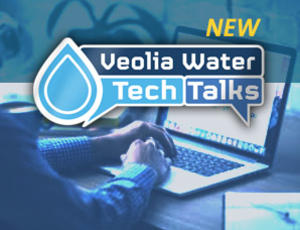Veolia's AutoFlot® Induced Gas Flotation and Power Clean® Nutshell Filtration are key components of an effective quench water treatment system for an Ethylene Plant.
Quench water represents about 80% of the total waste streams generated from the operations of an ethylene plant. It is also by far the most polluted, containing oil, benzene, styrene, butadiene, and other volatile organic compounds (VOC). Separate waste streams such as wash water and decoking water, along with spent caustic, represent minor flows compared to the volume of quench water that is generated from ethylene cracking.
Polymers such as polyethylene are manufactured in pellet form, using ethane and propane as feedstock. The formation of pellets takes place after the resin has been polymerized via catalyst in the reactor vessel with hexane as a solvent. The product is centrifuged, washed with carbon tetrachloride, centrifuged again, washed with acetone, water washed, extruded through a pelletizer, and washed with quench water.
Quench water has a key role in pellet formation. To maintain a high quality polymer pellet, quench water must be conditioned through advanced filtration to prevent water contaminants such as sand, iron, and organic material from flashing onto the pellet surface. Poor treatment techniques can result in a lower quality pellet with reduced market value.
Veolia’s AutoFlot® enhanced flotation and Power Clean® nutshell filtration are quench water treatment technologies that help ethylene cracking operators maintain high quality pellet production.
A Focus on QuenchFlow™ Technology
Veolia Water Technologies has developed QuenchFlow™, a unique, effective and economical integrated treatment system to clean the contaminated quench water generated from ethylene production operations.
This modular system is a closed-circuit solution that treats the quench water for reuse and recycles the waste streams. The modular design enables quick, easy installation with prefabricated modules that are factory assembled and tested prior to shipment. The result is a shorter project schedule, reduced cost, and minimization of risks associated with on-site activities.
Technology Description
QuenchFlow™ incorporates proven Veolia technologies, including Veolia’s Autoflot™ induced gas flotation (IGF) and Power Clean® nutshell filters (NSF), in a fully integrated modular system. The contaminated quench water is chemically treated upstream of the Autoflot using an inline dosing system provided by Veolia. It then enters the Autoflot where gas is induced at the bottom of the unit via eductors. The gas bubbles float free oil and suspended solids to the gas/liquid section of the unit, where it forms a froth that is skimmed and removed.
Autoflot effluent then passes through a 2-stage nutshell filtration process. Three Power Clean nutshell filters are provided to operate in a lead-lag configuration with the third in cleaning/standby mode. The walnut shell media retains more oil than other media types and requires no chemicals or gas scour for media cleaning. The Power Clean uses a patented fluidized cleaning process that effectively strips solids and oil from the media with very little backwash water and no surfactants. Feedwater or filtered water can be used for backwashing, after which it is recycled to the system inlet.
The treated water is then sent to the dilution steam generator for reuse, creating a closed circuit loop. The full system, including IGF, NSFs, backwash tanks and controls, is mounted on modular platforms for easy installation.
Application
Ethylene is produced from cracking different feedstock (i.e., ethane, naphtha, etc.) at high temperatures. In steam cracking technology, cracked gas is cooled at the Quench Tower (QT). The QT further separates the gas from liquids. The gas product is H2 plus light hydrocarbons, with ethylene being the major component. The QT effluent is water contaminated with coke fines and hydrocarbons comprised of more than five carbon atoms. Using QuenchFlow, the contaminated quench water is cleaned and then sent back to the dilution steam generator for reuse.



